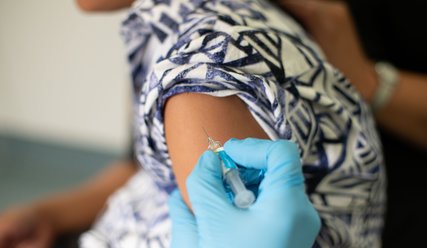Understanding inequity for rural Māori
Professor Sue Crengle, who was recently appointed to the board of Te Aka Whai Ora – the Māori Health Authority, is hopeful that rural Māori will feel the benefits of the health reforms, adding that she hopes to see serious steps towards greater equity during her lifetime.
“We need structural reform that gets rid of the systemic inequities that Māori experience. Is it fair that we have structural inequities – outcomes of colonisation, institutional racism and so many other factors? Even pay parity – there’s not just a difference between male and female, there’s a huge difference between Māori and non-Māori. If we can get rid of structural drivers, including racism, then we will go a long way to helping with some of these inequities.”
During GP22: the Conference for General Practice, Professor Crengle spoke on behalf of Associate Professor Garry Nixon, Dr Jesse Whitehead, Associate Professor Gabrielle Davie, Mr Brandon de Graff and Professor Ross Lawrenson about the mortality outcomes and inequities experienced by rural Māori in Aotearoa.
“Exploring the differences between urban and rural Māori is key, both groups suffer inequities in the health system, but it seems that rural Māori have additional factors such as access and quality of care that we need to look at in more detail.”
The research and analysis of data using the Geographic Classification for Health (GCH) (a newly developed urban:rural classification developed for use in the health system, funded by the Health Research Council of New Zealand) aims to describe the impact of living rurally on Māori mortality by comparing Māori mortality with that of non-Māori within each GCH strata and to compare urban and rural Māori mortality.
The key findings of the report were:
- Māori all-cause mortality and amenable mortality rates are significantly higher than non-Māori in each of the five strata of the GCH. The differences between Māori and non-Māori were greatest for amenable mortality.
- Both all-cause and amenable mortality is lowest in the most urban areas and increases as rurality increases. This is true for both Māori and non-Māori populations.
- Although rural Māori mortality rates are higher than urban Māori mortality rates, the differences are smaller than the differences between Māori and non-Māori.
Inequitable outcomes, as we know, often go hand in hand with deprivation; ethnic differences in deprivation profile can explain some of the ethnic inequities in health that we see. The 2018 NZ Index of Deprivation (where 1 decile represents the areas with the least deprived scores and 10 the areas with the most deprived scores) found that 55 percent of Māori live in the deciles 8, 9 and 10. At the other end of the scale, only 14 percent of Māori live in areas in the three least deprived deciles.
Sue says that understanding the intersectionality between urban: rural status, deprivation and ethnicity is crucial. “There’s clear evidence of Māori: non-Māori inequities in all areas, both urban and rural but these inequities are more marked for amenable mortality. We need to understand the variation in the coverage and quality of healthcare that underlies this.”


